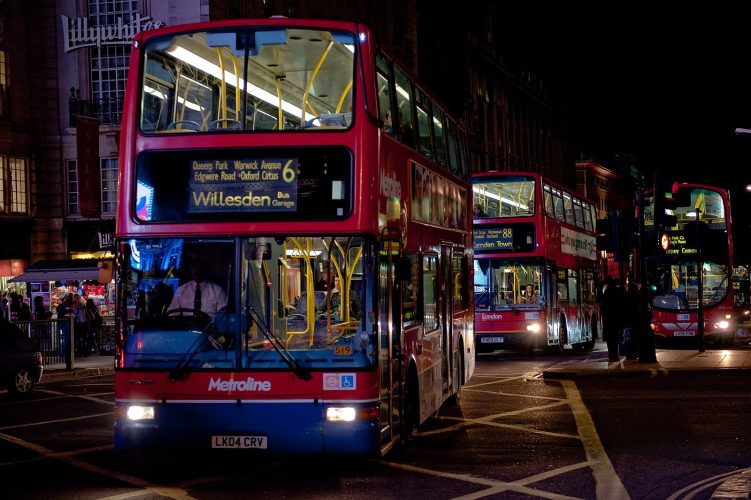Southwark, Haringey and Westminster were the most dangerous boroughs for riding the bus in 2023, according to new statistics from the Department for Transport.
There were 80 bus casualties in Southwark, which equates to 25.36 per 100,000 residents in the borough, and the recently-released figures for 2023 include those seriously injured or killed while onboard bus services in London.
Southwark had 28 more casualties in 2023 as well, up from the 52 recorded incidents the previous year, followed by Haringey in second with 23.20 casualties per 100,000 residents and Westminster third with 21.75.
Bus safety campaigner and bus collision survivor Tom Kearney said: “If you crunch TfL’s published numbers you’ll see that both categories, injuries from onboard incidents and injuries from bus collisions, are increasing.
“In my view the most credible explanation for the increase in onboard injuries has nothing to do with passengers not taking care, but everything to do with how buses are being driven and by bus drivers being forced to keep to contracted time performance targets that haven’t been changed to account for increased congestion and 20mph speed limits.”
Kearney was hit by a bus in Oxford Street in 2009 and suffered critical injuries.
Since then his #LondonBusWatch campaign has fought for increased bus safety, both for onboard casualties and bus collisions, and for TfL to put safety first in its design, management and enforcement of bus contracts.
Kearney’s campaigning was a contributing factor in TfL publishing a decade’s worth of bus safety performance data on its website.
The safest boroughs for bus travel were Kingston upon Thames, Tower Hamlets and Bromley.
Bromley recorded only 16 casualties in 2023, equating to 4.83 per 100,000 residents, and Tower Hamlets also recorded 16 casualties, but equating 4.87 per 100,000 residents.
In his 2018 Transport Strategy, London Mayor Sadiq Khan committed to Vision Zero, which aims to eliminate all deaths and serious injuries from the city’s transport network by 2041.
The Vision Zero action plan focuses on introducing new lower speed limits across London streets, transforming junctions, where many collisions occur, and bringing in a new Bus Safety Standard across the fleet.
In 2023, London accounted for nearly a quarter of the UK’s bus fleet, with 30,154 buses operated by local bus services, 8,7888 of which were in London.
TfL have also investigated causes of bus casualties, such as driver fatigue, pedal confusion and road speeds.
TfL bus drivers recently took to the streets to campaign for safe work schedules, access to toilets on routes and temperature-control in the driving cabs.
TfL’s director of buses Lorna Murphy said: “Our thoughts remain with everyone affected by bus collisions.
“Every death on the transport network is devastating and we’re determined to end the trauma caused by serious incidents on the transport network.
“Safety is our utmost priority and we are committed to learning from every collision as part of our Vision Zero goal to eliminate death and serious injury on the network.
“This includes our comprehensive bus safety programme, which is driving major safety improvements across our network and funding specific interventions to reduce collisions.
“We will not hesitate to take action where needed to keep people safe and continue to work closely with all our bus operators.”
Anybody affected by serious incidents involving TfL services are able to access help and support from The Sarah Hope Line on 03432225678.
Feature image credit: Matthias Rhomberg, Creative Commons Attribution 2.0 Generic





